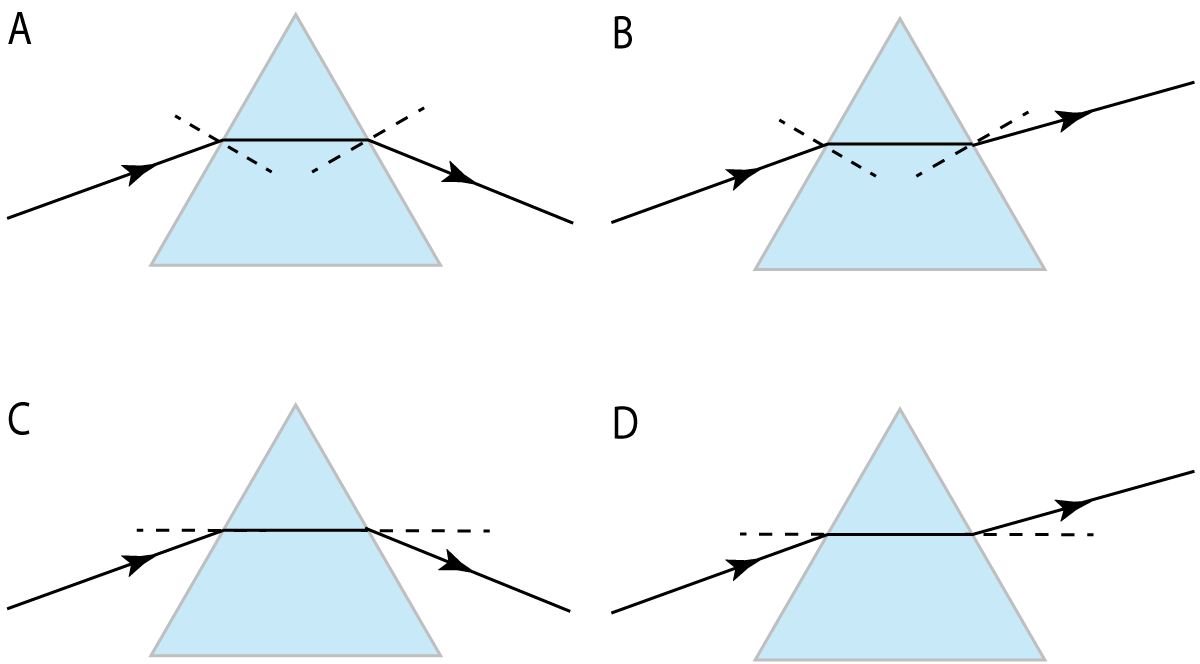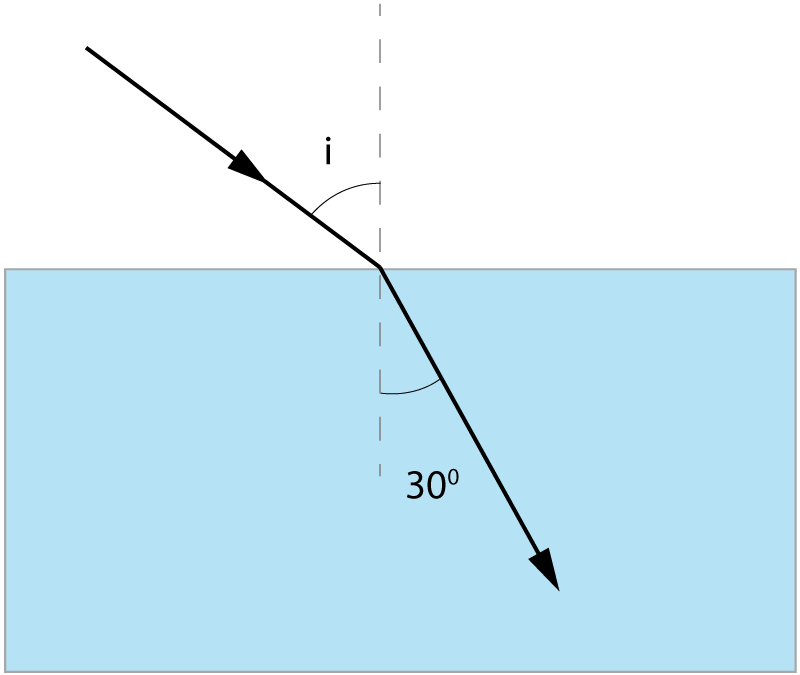|
Target: 10 Questions in 10 minutes |
||||||||||||||||||||||
1. The 'normal line' is an important concept in the topic of refraction. it is drawn at the point where the wave hits the refracting medium. Which of these is the best description of a normal line?
|
||||||||||||||||||||||
2. The angles of refraction should always be measured between ..
|
||||||||||||||||||||||
3. A prism refracts light. Which of the following diagrams correctly shows the relevant normal lines and the light being refracted in the correct direction? |
||||||||||||||||||||||
 |
||||||||||||||||||||||
4. A light ray is refracted by a glass block. Which of the diagrams below correctly shows a wavefront representation of this?
| ||||||||||||||||||||||
5. Total internal reflection will only occur if a wave is incident on a surface such as glass under certain conditions. Which of these best describes these conditions?
| ||||||||||||||||||||||
6. Which of these is the best description of the critical angle of a medium?
|
||||||||||||||||||||||
7&8. Water will refract light but also refract sound. The table below gives typical values for the speed of sound and light in sea water and in air.
(Speeds given to 2 sig figs). Light and sound waves pass from air into water at an angle of incidence = 10o. Which of the answers in the table below gives the refracted angles for sound and light? |
||||||||||||||||||||||
| ||||||||||||||||||||||
8. If the refractive index of air is equal to 1.0, what is the refractive index of sea water for a light wave? | ||||||||||||||||||||||
Q9&10. A light ray is incident on a glass block as shown. The refractive index of the air is 1.0, and 1.6 for the glass. The value of sin ( 300 ) is 0.5 . |
 |
|||||||||||||||||||||
9. As the light ray enters the glass and changes direction, some properties of the wave change. Which of these best describes the changes to the wave properties?
| ||||||||||||||||||||||
10. Which of these formulas is equal to the angle of incidence, i? | ||||||||||||||||||||||